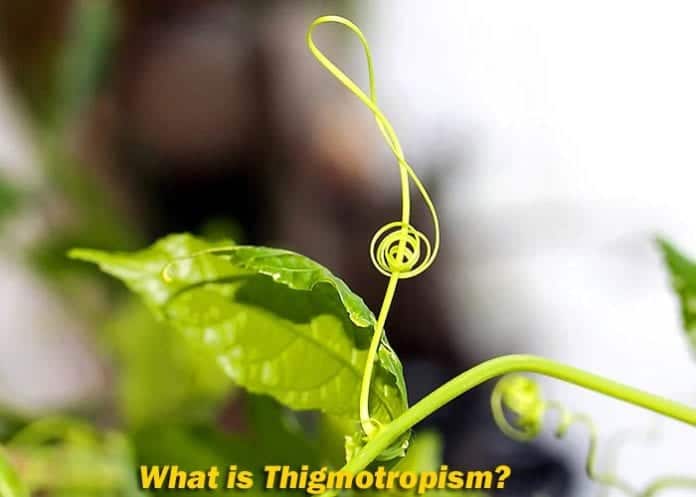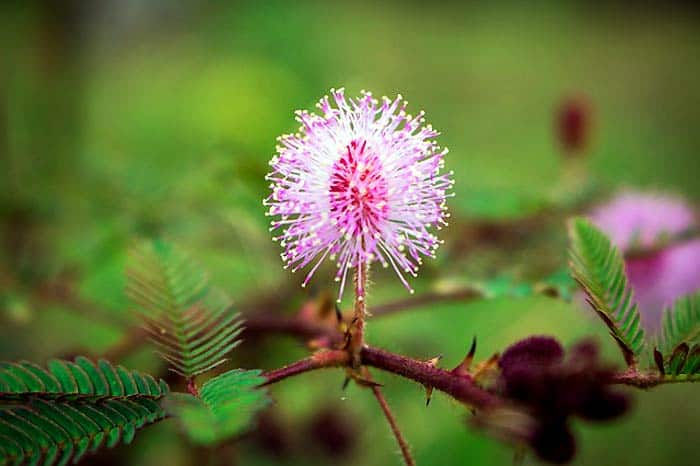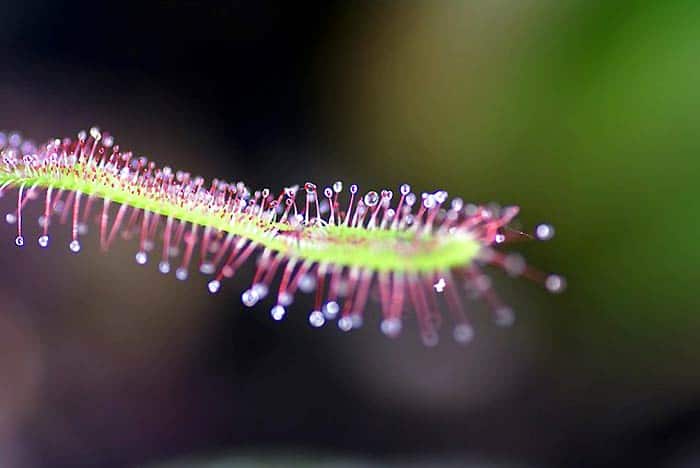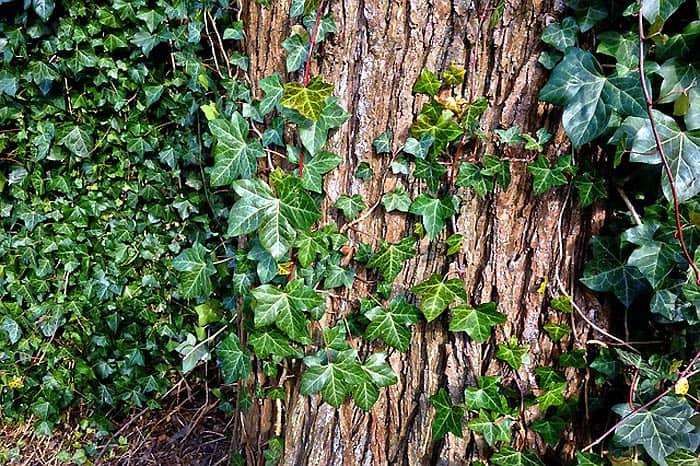
Thigmotropism: Plants respond to stimuli in the environment using varied responses. A plant is fixed to the soil and cannot move from its rooted location. To exhibit a response, it changes the way it geprows. The mechanism of response to external stimuli in plants is controlled by plant hormones – which are small molecule chemical messengers.
Table of Contents
Thigmotropism refers to the movement of a plant in response to the stimulus of touch or contact. It is also called Haptotropism. The plant may change its orientation or the orientation of any of its organs during this process. There are many different types of thigmotropic behavior in different plants. It can either be positive, where the plant moves towards the stimulus or negative, where the plant moves away from the stimulus.
Thigmotropism occurs more commonly in climbing or twining plants. To enhance the process of photosynthesis, some plants make use of this phenomena to move towards their stimuli to be exposed to more sunlight. Other instances are seen in processes such as pollination and movement of roots deeper into the soil.
Different mechanisms are employed in the phenomenon of thigmotropisms such as rapid contact rolling and differential growth. Let us explore these mechanisms in this article.
Note: There are two other tropisms in the plant world namely Geotropism and Phototropism. Geotropism is the movement of the plant in response to gravity. Phototropism refers to the movement of the plant in response to light. We will explore them in the future articles.
Definition of Thigmotropism
 [responsivevoice buttontext=”Thigmotropism”][/responsivevoice]Thigmotropism is defined as a negative or positive directional response in a plant or part of a plant such as a plant organ, that is caused by an external stimulus such as touch or contact with any solid object.
[responsivevoice buttontext=”Thigmotropism”][/responsivevoice]Thigmotropism is defined as a negative or positive directional response in a plant or part of a plant such as a plant organ, that is caused by an external stimulus such as touch or contact with any solid object.
- The factor that causes the stimulus is a hard surface that can change the direction of growth of the plant or part of the plant. Thigmotropism can be seen in the opening and closing of the leaves or petals of certain plants, or coiling of the plant. Thigmotropism is most commonly seen in twinning plants and tendrils.
- Both negative and positive thigmotropic behavior can be observed. When an object touching the stem of a plant causes it to grow towards it in an upward direction, it is considered to be positive form of thigmotropism.
- An example of negative thigmotropism is the movement of the roots away from an object touching them in the soil. Roots are known to be negatively thigmotropic, as the response to an object touching them enables them to move into the soil with minimum resistance.
![]()
How Does Thigmotropism Occur?

Some plants are more sensitive to touch than humans. In comparison, human skin can feel the minimum weight of 0.002mg on it, whereas an insectivorous plant called the sundew plant can detect a weight of 0.0008mg on it, whereas a tendril of the Sicyos plant can detect a weight of 0.00025mg.
- The mechanism by which thigmotropism occurs is well established and studied and differs by plant type.
- Thigmotropism occurs due to actions of the plant hormone auxin. Touched cells produce auxin which then transfers auxin to non-touched cells. These untouched cells then grow faster causing them to bend around the stimulus.
- The mechanism by which how this growth signal or the plant hormone auxin is transferred from the touched to the untouched site is slightly complicated. Some possible mechanisms may contribute to this process which differs from plant species to species.
- Despite this complexity, a well-known fact is that the signal must arise from the outermost layer of the plant surface known as the epidermis. The layer is densely populated with tiny hair-like structures called tactile papillae and well-established connections between the cells known as plasmodesmata.
- When an external stimulus comes in contact with these hairs, the membrane of the cell is temporarily broken down, which causes the cell to change its turgidity or shape thus resulting in a curved or coiling movement.
- The hormone ethylene helps in changing the shape or turgidity of the cell. The response is then transferred to other cells towards the untouched part of the plant through the connections between epidermal cells called plasmodesmata, and the reaction that occurs is typically very fast.
![]()
Why Does Thigmotropism Occur?

The phenomenon of thigmotropism has various functions for different plant species.
- One of the most critical functions that thigmotropism confers upon a plant is during the process of positive thigmotropism when a plant grows in the direction of the external stimulus causing it to be exposed to more sunlight and further enhance photosynthesis, typically seen in climber plants.
- In the case of roots, thigmotropism helps the root move deeper into the soil with minimum resistance.
- Thigmotropism in flowers by an external stimulus such as a pollination results in movement of their sex organs towards the stimulus to enhance their chances for pollination.
- Plants that need support to grow, respond to thigmotrophic stimuli by wrapping or coiling around their stimulus which is usually a hard surface, thus aiding the growth of the plant, typically seen in climber plants.
![]()
Types of Thigmotropism
There are two types of thigmotropism mechanisms that occur. Some plants can exhibit one or both of these behaviors.
Differential Growth
Thigmotropism in some plants occurs by a process known as differential growth. In this process, certain parts of the plant can grow due to the external stimulus.
- In the case of negative thigmotropism in plants, the part of the plant that makes contact with the stimulus will grow at a much slower rate than the opposite side, which gives the effect of that part coiling away from the stimulus.
- In the case of positive thigmotropism, the part of the plant in contact with the stimulus will grow at a faster rate than the opposite side, thus causing it to move towards the stimulus.
![]()
Rapid-contact Rolling
Another mechanism by which plants exhibit thigmotropism is by a process known as “rapid-contact coiling“.
- It occurs by a change in the turgidity of the cells of the tendril thus causing it to curve, by a series of relaxation and contraction of the non-contact and contact surfaces respectively. It is a rapid process, and response.
![]()
Both these mechanisms are controlled by the hormones auxin and ethylene that help in transducing the growth signal from one part of the plant to the other leading to rapid movement such as coiling, clinging, or bending.
Examples of Thigmotropism
Here are some good examples of thigmotropism.
Tendrils
- An example of thigmotropism is seen in tendrils. Tendrils are typically small thread-like structures mostly found in climbers that are used for support. The form of movement that tendrils display a response to a stimulus is “coiling” movement.
- The Humulus lupulus, a herbaceous climbing vine, has tendrils that coil around the support/solid object that serves as a stimulus, in the clockwise direction. It uses the stimulus as support for growth. Tendrils are technically modified leaves that search for support to cling onto. Once it finds this support, it releases the hormone auxin and by the process of differential growth, exhibits the response of thigmotropism.
![]()
Creeping Plants
- Another example of thigmotropic behavior in plants is seen in creeping plants, commonly known as ivies or by the scientific name Hedera. Hedera plant uses the surface of a tree as a stimulus for positive thigmotropism.
- Thigmotropism behavior causes the creeping plant to grow and coil around the tree and grow in an upward direction towards it. Ivies often use trees for climbing support.
- Some house or garden plants also show thigmotropic behavior, such as Morning glory, periwinkle, Money plants, Passion vines, Ivy plant, etc.
![]()
A recently asked question in the field of plant behavior is whether thigmotropic behavior triggers a phenomenon known as thigmomorphogenesis. It refers to altering growth patterns of plants due to a response generated as a result of any mechanical, environmental stimulus which means that plants with external mechanical stimuli will have completely different overall growth patterns as compared to other plants. It differs from thigmotropism in the fact that the latter is concerned with the differential growth of only a part of the plant towards or away from the stimulus.
Another question that has been asked is whether thigmotropism has resulted in wilting of plants that are overexposed to sunlight.
Although the mechanism of thigmotropism is quite clear, some questions remain to be answered.
![]()
Cite This Page
References
- “Plant Responses ( Read ) | Biology | CK-12 Foundation”. Accessed March 03, 2018. Link.
- “Thigmotropism”. Accessed March 03, 2018. Link.
- “Thigmotropism – Definition, Types and Examples | Biology Dictionary”. Accessed March 03, 2018. Link.
- “Thigmotropism”. Accessed March 03, 2018. Link.
- “Plant Life: Tropisms”. Accessed March 03, 2018. Link.
- “Thigmotropism: A Plant’s Response to Touch!”. Accessed March 03, 2018. Link.

















This is really really helpful. Thank you so much.